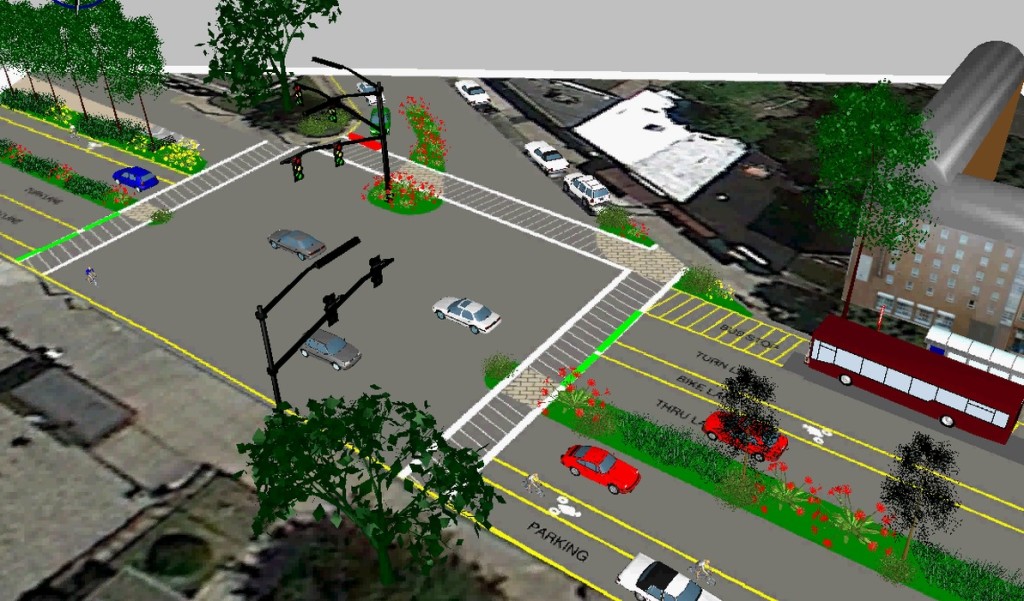When planning a transformative project like the Central Broadway Streetscape Improvements Project, hypothetical questions of “what if…” come up often. Thankfully, through traffic analysis, many “what if” questions can actually be answered. Over the past decade, traffic analysis software has improved drastically, allowing engineers to create virtual 3D models and simulations of possible streetscapes using information collected from current conditions. “Developing a traffic analysis model will allow the City of Somerville to consider in detail the tradeoffs and impacts of, for example, adding or reducing a travel lane for different modes using the corridor,” according to Sarah Spicer, Project Manager for the City.
In April, with the help of camera technology, the project team gathered extensive traffic data in the Central Broadway corridor from Route 28/McGrath Highway to Magoun Square. Surveys were done during weekday AM and PM peak hour, as well as midday peak hour on Saturdays. Then the team inputted this site data into the analysis software to create a 3D model of Central Broadway. The software is calibrated using numerous characteristics of Central Broadway traffic, such as percentage of cars versus trucks, how people drive (i.e., tailgating versus cautiously), and how long it takes for pedestrians to cross the street given various widths.
According to Steve Scalici, STV Incorporated, studying the traffic and creating the model is the relatively easy part of the process. The challenge comes with the next step — where the team uses the model to test out and analyze possible roadway configurations for the City to consider.
The model allows the team and City of Somerville to compare design options based on their prospective future conditions, including lengths of traffic queues, overall travel speed across the corridor, and vehicular level of service (graded from A to F; the C to D range is acceptable in urban settings).
City staff and the project team will examine the Central Broadway model from different points of view, from the perspective of a pedestrian, bicycle, or car. The model will tell the team a lot about how signals should work to accommodate safer traffic speeds and comfortable pedestrian crossings. They can also see what happens to traffic flow if a lane is removed or a bike path is added.
Although juggling many different needs and wants for the design is a bit of a challenge, it is also exciting for both the team and the Winter Hill community. It is in this stage that the team is able to take the community’s input and see what is possible and what the tradeoffs of each suggestion may be.
The team will present the traffic analysis at the next public meeting this fall. You can sign up for the mailing list to receive meeting notifications and other project updates here. Please also visit the project website for more information about the Central Broadway Streetscape Improvements Project, including project documents and meeting presentations.


Rob
Sarah Spicer